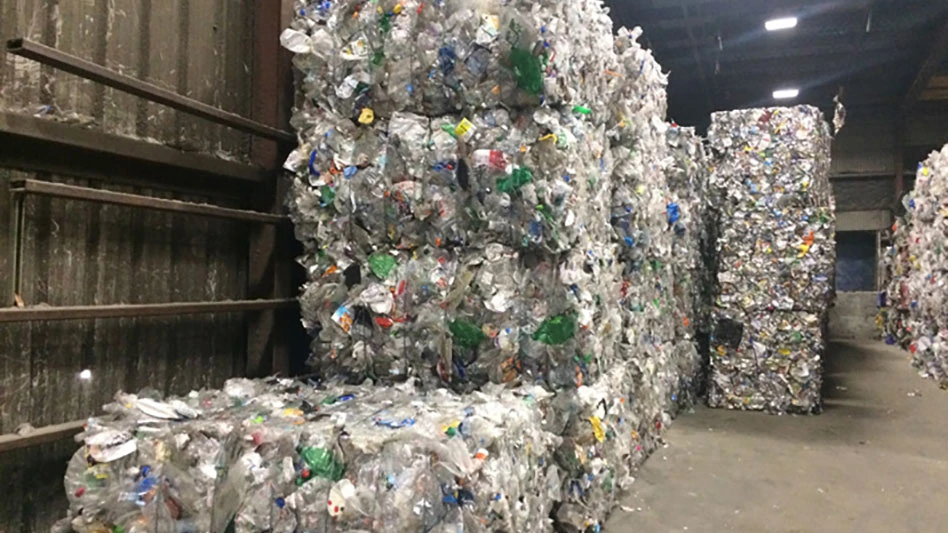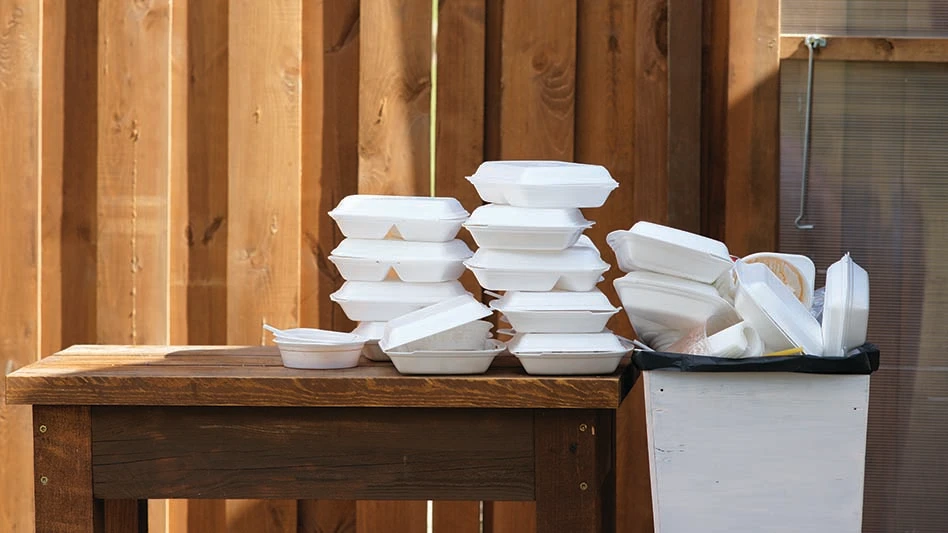Altruistic ideals aside, C&D recyclers are in the business to make profits. They all search for profitable, value-added products to produce with C&D wood. But finding new ways to use C&D wood is a challenge. In the northeastern United States, many C&D recyclers make alternative daily cover and shaping/contouring material for landfills from leftover C&D wood, both considered relatively low-value uses.
The landfills using those materials are closing at a fast rate and new landfills are not opening quickly enough to provide outlets. The market for those materials is drying up. If recyclers are forced to dispose of C&D wood as waste, disposal fees will surely rise, as they have already.
According to Franklin Associates Ltd., Prairie Village, Kan., in 1996, about 136 million tons of building-related C&D were produced in the U.S. The Construction Materials Recycling Association (CMRA), Lisle, Ill., estimates that 300 to 350 million tons of C&D materials are produced annually in the U.S. (including bridge and road debris). Those kinds of numbers indicate that value-added uses for C&D are necessary for C&D recyclers to survive. There is only so much metal and aggregate in building debris to re-sell. So, what do we currently do with the wood component of the C&D debris stream? Some markets are:
• Chip board
• Landfill daily cover and shaping/contouring material
• Sludge bulking agents
• Hydroseed materials
• Animal bedding
• Wood chips for landscaping
• Wood chips for fuel
• Mulch.
What Is In C&D
In 1999, Green Seal Environmental Inc., Hyannis, Mass., conducted a study of incoming materials at a mixed C&D debris recycler in New England. This is what was found:
• More than 40% organic materials
• More than 45% fines
• More than 6% metal
• 5% aggregate
• More than 2% bulky waste
It is easy to see that a large majority of C&D material headed into mixed debris processing facilities consists of an organic fraction that can be used again. That is where gasification comes in.
The process allows a higher value added product to be developed and reduces the volume of organic waste materials in the C&D materials processed by 85% to 90%. This higher value-added product can be made without creating an environmental problem, without emitting hazardous air pollutants and, as a bonus, creates electricity at the same time.
So what is gasification? Unlike incinerators that use high amounts of oxygen and heat to destroy materials, gasification is a process of thermal oxidation using low oxygen and low heat so that the gases and other byproducts are not destroyed, but collected for use. For C&D purposes, gasification is a way to burn organic materials such as C&D wood to make higher value-added products.
But that is only the latest use for gasification. The technology for gasification has been used in the U.S. for more than 100 years.
Older readers might remember a product called City Gas or Town Gas that was piped directly into homes for cooking and light fixtures. This gas was made from gasifying coal, collecting the gas that came from its burning and piping it to your home. Neat stuff, but unfortunately it resulted in a lot of explosions and fires.
The modern chemical industry was spawned by gasification of coal. The leftover sludges were synthesized into dyes, solvents and other chemicals. Gasification was used during World War II in Norway to power cars by burning wood. In 1942, gasification was used to crack crude oil into high-octane gasoline. All refineries use this technology today to make gasoline and other light hydrocarbons.
Gasifiers were in commercial use in the 1980s in Florida, Georgia and Tennessee. In the 1990s, gasifiers were built to produce electricity in Vermont, New York City, California, Texas and Oklahoma. And more are being built today.
How It Works
Materials are put into the gasifier. The gasifier that will work the best for C&D has a fluidized bed consisting of a layer of sand particles supported by a steel grate. Super heated air or steam is blown upwards into the fluidized bed that suspends the sand particles and causes them to circulate (giving them a "fluid" appearance).
As C&D wood drops from above into the gasifier it passes through several heat zones during which it releases its constituent gases. After burning, the gases are collected and directed to another process. Solid particles are also collected for additional use. Ash falls to the bottom for disposal (or potential use).
High value-added products can be made from the gases, particles and possibly the ash. In the past and today, the collected gases have been used to burn in internal combustion engines or to spin a turbine and create electricity. Left over heat has been used to help make kitty litter by rapidly drying the material used after production. Charcoal and activated carbon have also been made from the left over particles or "char," and heavy-weight, non-sulfur containing oil has been made for industry to use as a fuel.
In addition to C&D use as a feed stock, other options are forestry materials, farming by-products, grasses, chicken droppings and just about any material that has a high organic content.
Sounds simple right? Sounds kind of like the magic bullet for C&D right?
Sponsored Content
Still relying on manual sorters?
Let AI do the heavy lifting. Waste Robotics delivers reliable, high-performance robots tailored for complex waste streams. They require minimal maintenance, are easy to operate, and are designed to boost your recovery rates. Smarter sorting starts with the right partner. Waste Expo Booth #1969 & REMA #2843
Click here to see our robots in action!Sponsored Content
Still relying on manual sorters?
Let AI do the heavy lifting. Waste Robotics delivers reliable, high-performance robots tailored for complex waste streams. They require minimal maintenance, are easy to operate, and are designed to boost your recovery rates. Smarter sorting starts with the right partner. Waste Expo Booth #1969 & REMA #2843
Click here to see our robots in action!Maybe. There are always some clouds in between those silver linings. The technology is terrific and the potential is great for the C&D industry, but as with anything, use and acceptance of the technology in the C&D industry will take time and money.
Currently, research is under way to make diesel fuel, ethanol, propanol, and butanol from C&D wood as well as other feed stocks. The C&D market is growing and energy needs are growing. For those with vision that see problems as opportunities, and aren’t afraid to take the chances that all great people take, gasification may very well be the magic bullet, and a profitable one at that.
Terry Bauer is an environmental and safety consultant with Green Seal Environmental Inc., Hyannis, Mass.
|
BUFFALO PLANT WILL SEEK RECYCLABLE WOOD |
|
A fiberboard manufacturing plant being constructed near Buffalo, N.Y., by Ligna Recycling Technologies is planning to hire 64 workers and accept waste wood from throughout the region. A report in the Buffalo News quotes Ligna Technologies president Steve I. Simon of Toronto as saying the company and seven other Canadian investors are shareholders in the Lackawanna, N.Y., project. According to Simon, negotiations for a recyclable wood supply for the operation were conducted with Lake Front Recycling of Buffalo and other firms last year, but a contract with Lake Front was never signed. “As soon as we put our financial structure together, we are going to negotiate with local wood-waste suppliers in the Buffalo area,” he told the Buffalo News. Ligna Recycling will be eligible for grants and tax breaks, including $27 million in financing through Erie County Industrial Development Agency bonding and other tax breaks and incentives due to its location in the Lackawanna Economic Development Zone. Construction of the Ligna facilities is expected to cost about $32 million. The complex includes two sites sitting on a total of nearly 12 acres. |
Get curated news on YOUR industry.
Enter your email to receive our newsletters.

Explore the August 2001 Issue
Check out more from this issue and find your next story to read.
Latest from Recycling Today
- GFL opens new MRF in Edmonton, Alberta
- MTM Critical Metals secures supply agreement with Dynamic Lifecycle Innovations
- McClung-Logan Equipment Company joins Tana’s authorized dealer network
- Grede to close Alabama foundry
- Plastics Recycling Conference 2025: Working toward their targets
- SWACO rolls out new commercial recycling and food waste programming
- Updated: Matalco to close Canton, Ohio, plant
- Metso launches electric Anode Weighing and Casting Machine









